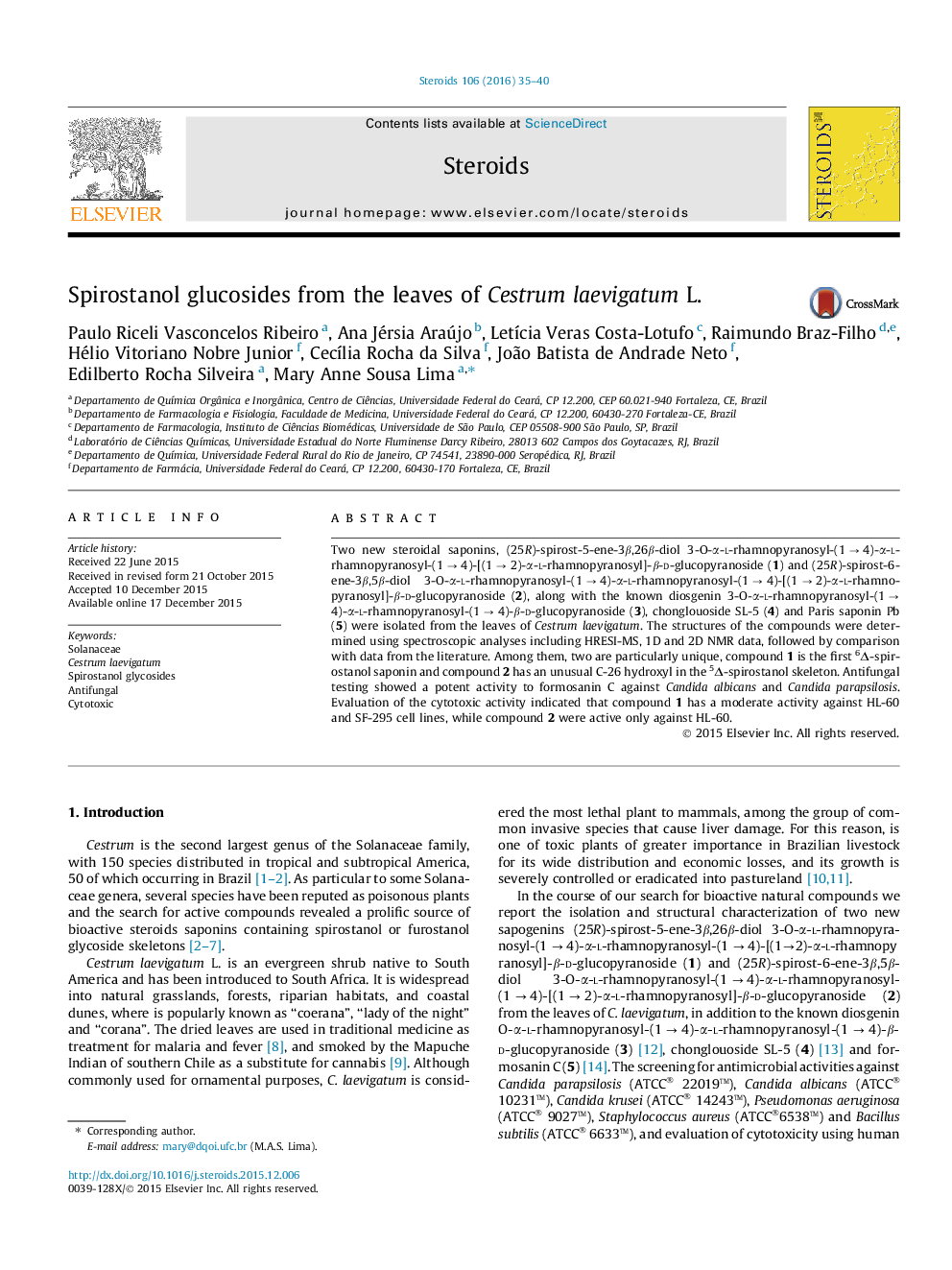| کد مقاله | کد نشریه | سال انتشار | مقاله انگلیسی | نسخه تمام متن |
|---|---|---|---|---|
| 2027510 | 1542702 | 2016 | 6 صفحه PDF | دانلود رایگان |
• Two new steroidal saponins were isolated from Cestrum laevigatum.
• Compound 1 is the first 6Δ-spirostanol and compound 2 has an unusual C-26 hydroxyl.
• The cytotoxic and antimicrobial activities of isolated compounds were evaluated.
• Compounds were characterized by spectroscopic analysis.
Two new steroidal saponins, (25R)-spirost-5-ene-3β,26β-diol 3-O-α-l-rhamnopyranosyl-(1 → 4)-α-l-rhamnopyranosyl-(1 → 4)-[(1 → 2)-α-l-rhamnopyranosyl]-β-d-glucopyranoside (1) and (25R)-spirost-6-ene-3β,5β-diol 3-O-α-l-rhamnopyranosyl-(1 → 4)-α-l-rhamnopyranosyl-(1 → 4)-[(1 → 2)-α-l-rhamnopyranosyl]-β-d-glucopyranoside (2), along with the known diosgenin 3-O-α-l-rhamnopyranosyl-(1 → 4)-α-l-rhamnopyranosyl-(1 → 4)-β-d-glucopyranoside (3), chonglouoside SL-5 (4) and Paris saponin Pb (5) were isolated from the leaves of Cestrum laevigatum. The structures of the compounds were determined using spectroscopic analyses including HRESI-MS, 1D and 2D NMR data, followed by comparison with data from the literature. Among them, two are particularly unique, compound 1 is the first 6Δ-spirostanol saponin and compound 2 has an unusual C-26 hydroxyl in the 5Δ-spirostanol skeleton. Antifungal testing showed a potent activity to formosanin C against Candida albicans and Candida parapsilosis. Evaluation of the cytotoxic activity indicated that compound 1 has a moderate activity against HL-60 and SF-295 cell lines, while compound 2 were active only against HL-60.
Figure optionsDownload as PowerPoint slide
Journal: Steroids - Volume 106, February 2016, Pages 35–40
